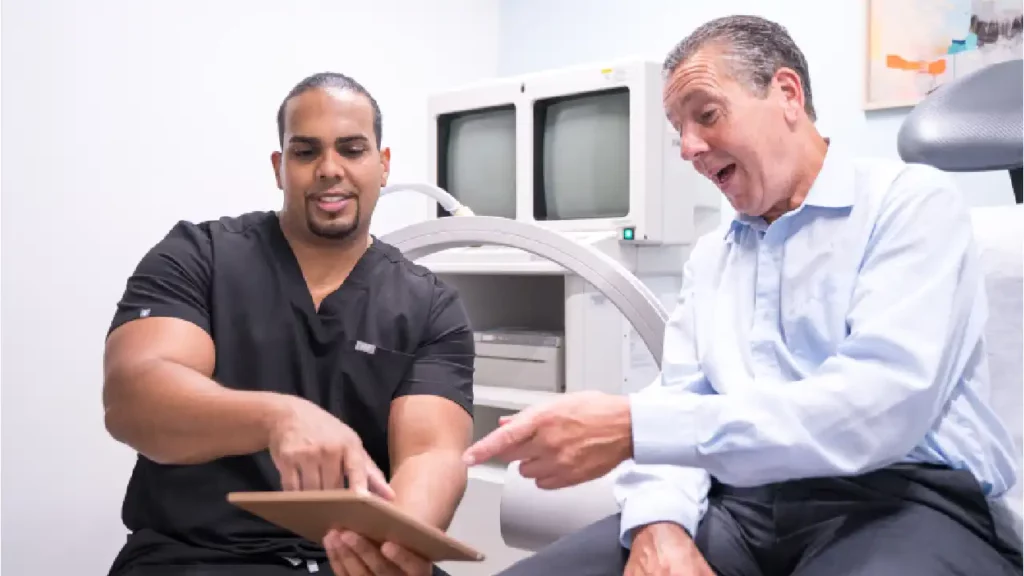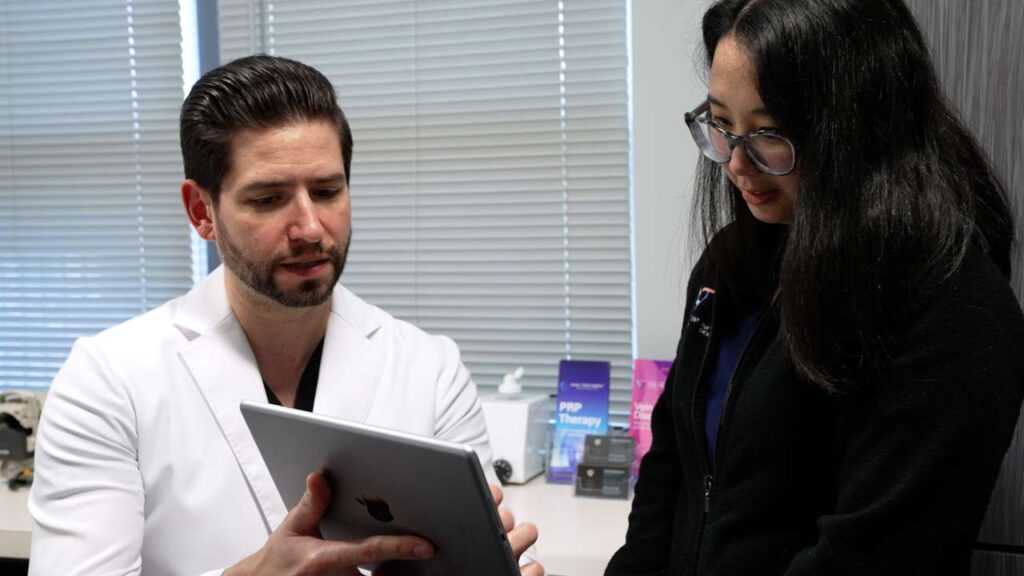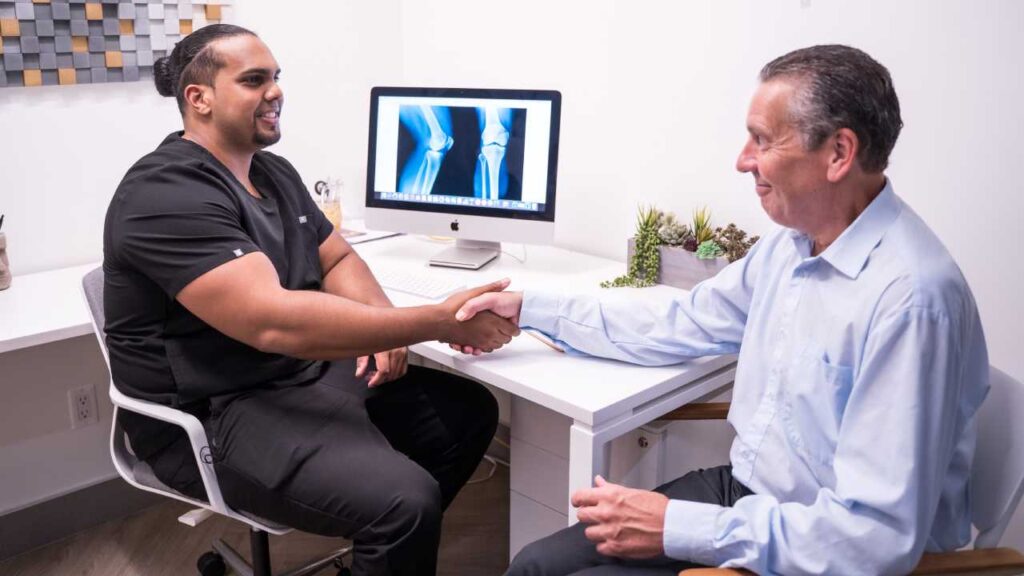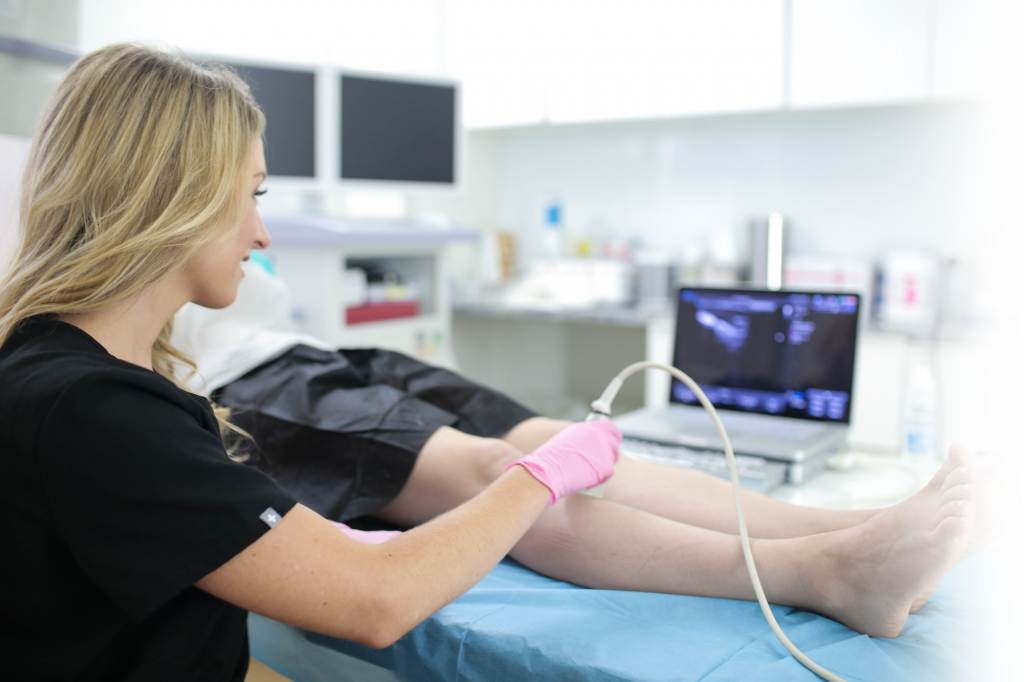Introducing the state-of-the-art vein clinics in NJ
The spider vein and varicose vein clinic in NJ has three state-of-the-art offices — Clifton, Woodland Park, and Paramus. Patients from Passaic County can visit the vein clinics in Clifton and Woodland Park, whereas patients from Bergen County can visit the vein clinic in Paramus. All of the vein clinics have plenty of parking spaces, and they’re extremely accessible for patients across New Jersey.
You can also request free insurance verification before scheduling an appointment at the vein clinics in NJ. You have to simply enter your details, and an insurance concierge will reach out to handle your details. They actively work to minimize your out-of-pocket financial burden and ensure your spider vein and varicose vein treatments are convenient and accessible.
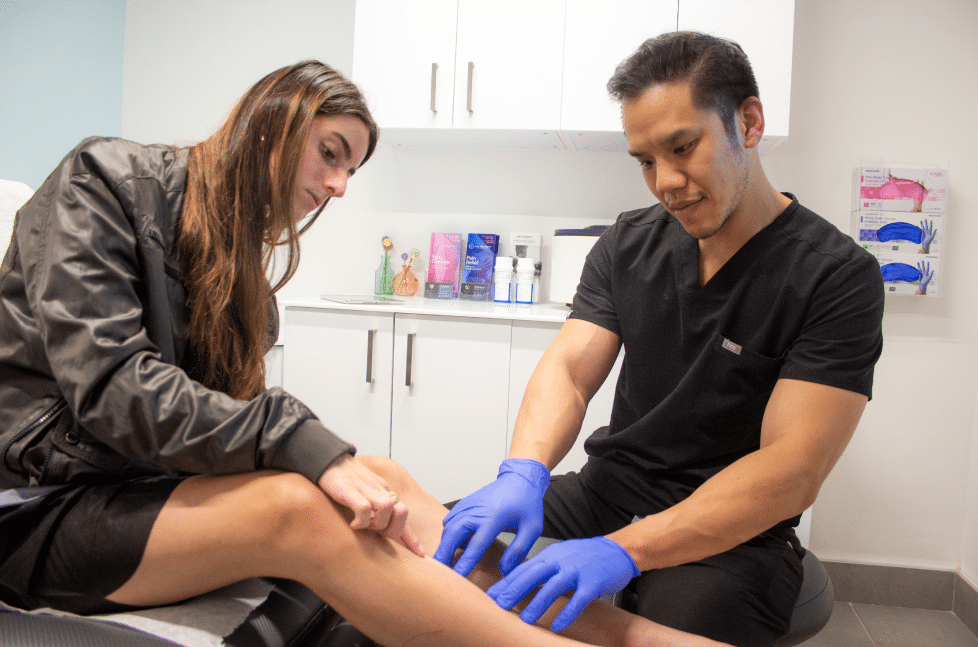
The vein clinics in NJ are led by board-certified, Yale-trained, and nationally recognized vein doctors. They provide minimally invasive treatments for spider veins, varicose veins, and chronic venous insufficiency. However, they’ve recently noted that most patients only consult them when vein disease advances considerably, mostly because they don’t know how to identify the early signs and symptoms of vein disease.
This article aims to spread awareness about spider veins, varicose veins, and vein disease. Below, we answer the most frequently asked questions about varicose veins and spider veins.
What are varicose veins and spider veins?
Varicose veins are large blood vessels that protrude out of the skin’s surface, looking like a mass of tangled, knotted, and twisted ropes or branches. They can be red, blue, green, purple, or skin-colored, and they usually appear on the lower extremities of the body. Spider veins are dense clusters of blood vessels that appear just underneath the skin’s surface. They can also be red, blue, or purple, and they usually appear on the legs or face.
Can compression stockings treat varicose veins and spider veins?
No. Compression stockings cannot treat varicose veins and spider veins, but they can prevent new ones from forming. Varicose veins and spider veins are essentially damaged blood vessels with excess blood accumulated within them. Compression stockings apply pressure on your leg veins, pushing the accumulated blood towards your heart. This can alleviate the discomfort and prevent new varicose veins from forming, but it can’t treat the existing leg veins or the underlying vein disease.
What causes varicose veins and spider veins?
Chronic venous insufficiency is the primary culprit behind varicose veins and spider veins. This is a medical condition wherein your vein valves collapse or malfunction. Your valves are generally responsible for effective blood circulation towards the heart. As such, when the vein valves malfunction, blood flows backward due to gravity and accumulates in the leg veins. The continued accumulation of blood in leg veins leads to spider veins, varicose veins, and other vein problems.
What are the symptoms of vein disease?
Chronic venous insufficiency is a medical condition with numerous potential symptoms, most of which can be misattributed to aging or exhaustion. The earliest signs and symptoms of vein disease include leg heaviness, frequent leg cramps, leg swelling, leg pain, skin discoloration, and restless leg syndrome. The symptoms of vein disease usually worsen at the end of the day or after long periods of sitting or standing still, i.e., when more blood accumulates in the leg veins.
What is restless leg syndrome? How do I know it’s caused by vein disease?
Restless leg syndrome is a condition wherein you have a constant and insatiable need to move or shake your legs. This can interfere with your daily activities and prevent you from sleeping comfortably, leading to insomnia and anxiety. Restless leg syndrome can be caused by numerous underlying factors. However, if the symptoms worsen at the end of the day or after long periods of sitting or standing still, it’s probably due to chronic venous insufficiency.
Are there any effective home remedies for varicose veins and spider veins?
No. There are no effective home therapies or remedies for varicose veins, spider veins, or vein disease. Online sources often peddle ointments, creams, and home therapies to unsuspecting patients, but all home remedies are ineffective. The only way to treat varicose veins and spider veins is by undergoing minimally invasive treatments in a reliable medical center led by vein doctors.
How do you prevent varicose veins and spider veins?
Varicose veins and spider veins are caused by vein disease due to the collapse of your vein valves. The vein valves may malfunction or collapse due to numerous risk factors, such as age, hormonal changes, pregnancy, weight gains, genetic predisposition, or a sedentary lifestyle or occupation. As such, there’s no definitive way to prevent varicose veins and spider veins. But you can minimize the risk by wearing compression stockings, exercising regularly, and elevating your legs while sitting.
What is the ideal diagnosis and treatment process for vein disease?
During your initial consultation, the vein doctor will examine your leg veins and study your symptoms. They’ll also administer a vascular imaging test to confirm if you have chronic venous insufficiency. If you have vein disease, they’ll recommend radiofrequency ablation, endovenous laser ablation, or venaseal to destroy the diseased vein responsible for your vein problems. If you don’t have vein disease, you may receive sclerotherapy or ambulatory phlebectomy to remove the spider veins and superficial varicose veins.
Can I get insurance coverage for varicose vein treatments?
Most varicose vein treatments are covered by insurance plans because they’re deemed medically necessary. As such, you can get insurance coverage for most vein treatments — you can also request insurance verification before your appointment.
